Rhyolite
Rhyolite is a type of volcanic rock that is formed from the rapid cooling and solidification of magma or lava that is rich in silica content.
It is typically light-colored, ranging from pale gray to pink or even reddish-brown, and has a fine-grained texture due to its rapid cooling process. Rhyolite often contains various mineral crystals, such as quartz, feldspar, and mica.
Showing all 10 results
-
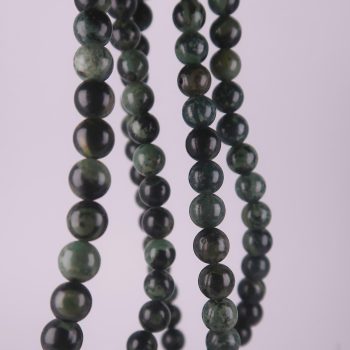
Kambaba Rhyolite bead strands
£3.00 -
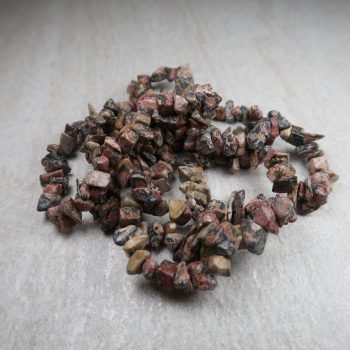
Rhyolite bead strands (Leopardskin)
£4.00 -
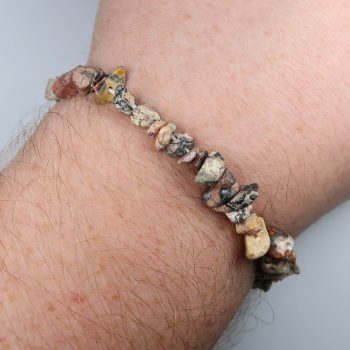
Rhyolite Bracelets (Leopardskin)
£1.95 -

Rhyolite Cabochons (Kambaba)
£1.50 – £10.00 -
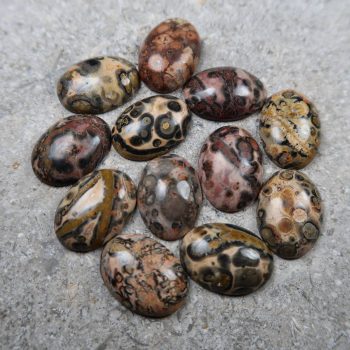
Rhyolite cabochons (Leopardskin)
£2.00 – £4.00 -
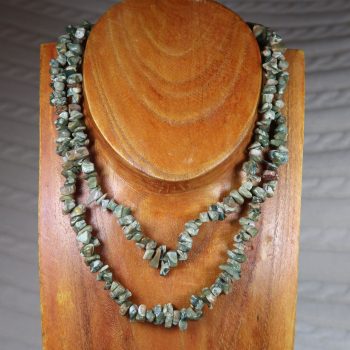
Rhyolite necklaces
£3.50 -
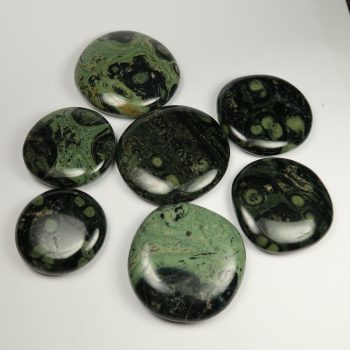
Rhyolite Palmstones (Kambaba)
£3.00 – £4.00 -
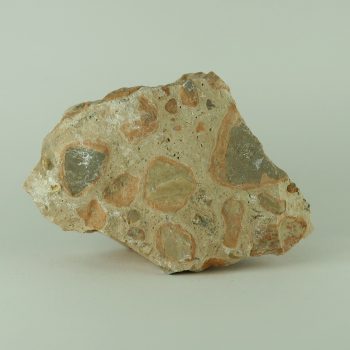
Rhyolite specimens (Orbicular)
£5.00 -
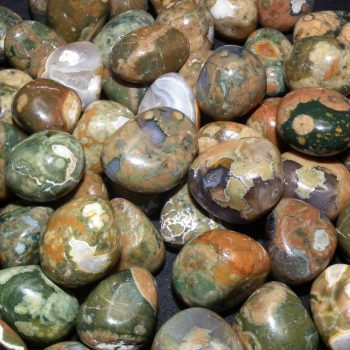
Rhyolite Tumblestones
£6.00 -
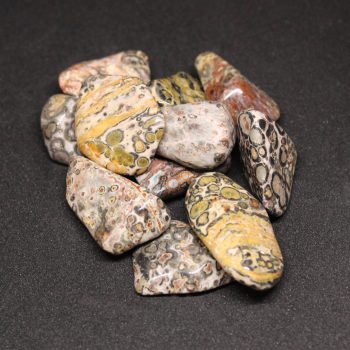
Rhyolite tumblestones (Leopardskin)
£2.00 – £3.50
Information about Rhyolite
Rhyolite is a fine-grained, extrusive igneous rock, typically light in colour with hues ranging from pale grey and pink to green or cream. It often exhibits flow banding, spherulitic textures, or porphyritic structure, where larger crystals of quartz, feldspar, or biotite are embedded in a fine groundmass.
Some rhyolite displays striking, swirling or orbicular patterns, especially in polished decorative specimens. Its appearance can closely resemble that of granite but with significantly finer grain due to rapid cooling.
Uses and History
Rhyolite has both practical and decorative uses.
Historically, it was utilised in tool-making due to its conchoidal fracture and sharp edges when broken.
In modern contexts, it’s valued for ornamental stone, landscaping gravel, and occasionally in the construction industry. Polished varieties are popular in lapidary work, where they are cut into beads, cabochons, and figurines.
The term “rhyolite” was coined in the 1860s by German geologist Ferdinand von Richthofen, derived from the Greek words rhýax (stream/flow of lava) and lithos (stone) – or common -lite suffix given to rocks and minerals. This refers to the lava flow origin of the rock. It is geologically young compared to many metamorphic or sedimentary stones and is commonly found in volcanic regions such as Iceland, Yellowstone (USA), and the Taupō Volcanic Zone in New Zealand.
Mineralogy
Pink, grey, light green, cream, with flow patterns or phenocrysts
Hazards and Warnings
Mineral collectors should wash their hands after handling specimens, to avoid any exposure to potential toxins.
Almost all rocks, minerals (and, frankly, almost all other substances on earth) can produce toxic dust when cutting, which can cause serious respiratory conditions including silicosis. When cutting or polishing rocks, minerals, shells, etc, all work should be done wet to minimise the dust, and a suitable respirator or extraction system should be used.
Translations
Arabic:
- ريوليت
Hindi:
Portuguese:
Bengali:
Indonesian:
Punjabi:
English:
- rhyolite
Italian:
Russian:
French:
Japanese:
Spanish:
- Riolita
German:
- Rhyolith
Korean:
Thai:
Gujurati:
Mandarin Chinese:
Urdu:
